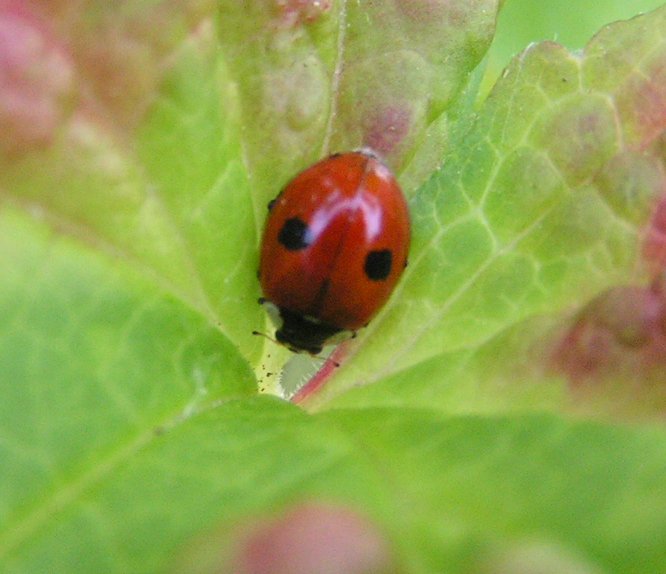- Two-spotted lady beetle
Taxobox
name = Two-spotted lady beetle

image_width = 200px
regnum =Animal ia
phylum =Arthropod
classis =Insect a
ordo =Bug
subordo =Polyphaga
infraordo =Cucujiformia
superfamilia =Cucujoidea
familia =Coccinellidae
genus = "Adalia"
species = "A. bipunctata"
binomial = "Adalia bipunctata"
binomial_authority = (Linnaeus,1758 )The two-spotted lady beetle ("Adalia bipunctata") is a carnivorousbeetle of the familyCoccinellidae and is very common in westernEurope . It is used as a biological control agent againstaphid s, e.g. ingreenhouse s.The most familiar form of the two-spot ladybird beetle is the red one with the two black spots. However, there also exists a black form with red spots on it. In addition, there are intermediate forms, but they occur only rarely in nature. . Inside the pupa, the adult develops. Finally the adult encloses from the pupa.
In some populations, the majority of the beetles are
female . In these populations, 80-90% of the offspring of a females are female. The cause of this anomaly is the presence of asymbiotic bacteria living within the gametic cells of the female lady beetles. The bacteria is too large to live in the male gametes (sperm ), so the bacteria can be transmitted to the next generation only through female gametes. When it ends up in a male, it will die when the male dies. Therefore, it kills most of the male embryos in the newly-laid eggs. These dead embryos then serve as food for their sisters when they emerge from their eggs. This trait is associated with a variety of different bacteria ("Wolbachia ", "Rickettsia ", "Spiroplasma "), which are present in between 0 and 20% of females, depending on locality.The two spot ladybird also carries a sexually transmitted infection in Central and Eastern Europe. The infection is an ectoparasitic mite that transfers between male and female (and female and male) during copulation. The infection sterilizes female two spot ladybirds, and at some points of the year, up to 90% of adult 2-spots become infected.
External links
*http://www.enature.com/fieldguides/detail.asp?recnum=IS0016
*http://www.discoverlife.org/20/q?search=Adalia+bipunctata
*http://animaldiversity.ummz.umich.edu/site/accounts/information/Adalia_bipunctata.html
Wikimedia Foundation. 2010.
